Figures of the Civil War and the Women’s Suffrage Movement
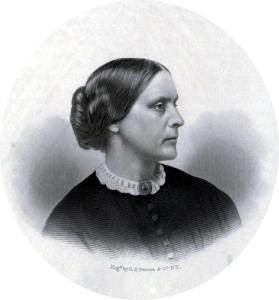
Nearly 150 years ago, the 15th Amendment extended the franchise to African American men. A generation later the 19th Amendment gave the vote to both Black and White women. Both of these events occurred long after the end of the Civil War, so why explore them on the Emerging Civil War blog? While women’s suffrage is only a century old, the struggle for the women’s vote has been in existence for centuries and was entwined with the fight for abolition prior to and during the Civil War with well-known figures such as Susan B. Anthony, Frederick Douglass, Elizabeth Cady Stanton, and more participating.
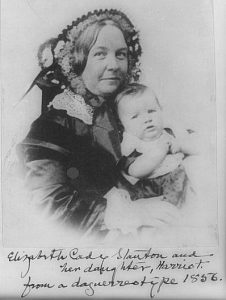
Two of the leading ladies of the women’s suffrage were Elizabeth Cady Stanton and Susan B. Anthony. Born of different backgrounds, both women became socially active and helped change history. The oldest, Elizabeth Cady Stanton was born in 1815 in Johnstown, New York. Unlike many of her contemporaries, Cady was well-educated. After attending school at the Johnstown Academy, her desire to attend Union College in nearby Schenectady was prevented by its policy accepting only male students. As a result, she completed her education the Troy Female Seminary where she began her involvement in a variety of different causes including temperance and abolitionist movements. In 1840, Elizabeth married Brewster Stanton, but in her wedding vows she made sure to have the minister remove the phrase “promise to obey” illustrating her support for equality for she later wrote “I obstinately refused to obey one with whom I supposed I was entering into an equal relation”.[i]
Susan B. Anthony was born in 1820 in Massachusetts into a Quaker family that was heavily involved in social reform. Her father Daniel was an abolitionist and temperance advocate instilling those believes into his children. Her brothers, Jacob and Daniel, moved to Kansas in the 1850s to support the Anti-slavery movement, with Jacob falling in with John Brown. Her younger sister Mary also became a women’s right activist with Susan. In addition to serving her well-known roles as women’s right, abolition, and temperance activist, Susan became heavily involved in several causes in her lifetime. These include a labor activist arguing for an eight-hour workday and equal pay, to educational reform arguing for better pay for female teachers and equality in the classroom. In 1856, at a state teacher’s convention, she argued:
Both sexes eat, sleep, hate, love and desire alike. Everything which relates to the operations of the mind is common in both sexes… If they are allowed to attend picnics together, and balls,and dancing schools, and the opera it certainly will not injure them to use chalk at the same blackboard.[ii]
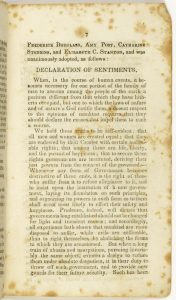
One historian, Ellen Carol DuBois, argued that the mid-19th century was an ideal time for the women’s suffrage movement to take off for “an enormous upsurge of popular political energies took place—among working men, in the antislavery societies, and in almost every aspect of antebellum life. The women’s suffrage movement was women’s response to these developments.” [iii] In fact, both Anthony and Stanton were among the leading women that organized some of the first gatherings pushing for women’s suffrage. For example, in July 1848 Stanton organized the Seneca Falls Convention. During the two-day meeting, about 300 attendees discussed several aspects of women’s roles in society and debated the right to vote. By the end of the convention, one-third of the attendees—made up of both men and women—signed a “Declaration of Sentiments” written by Stanton which stated:
Now, in view of this entire disfranchisement of one-half the people of this country, their social and religious degradation—in view of the unjust laws above mentioned, and because women do feel themselves aggrieved, oppressed, and fraudulently deprived of their most sacred rights, we insist that they have immediate admission to all the rights and privileges which belong to them as citizens of these United States.
Susan B. Anthony signed the “Declaration of Sentiments” a few days after the convention in her hometown.
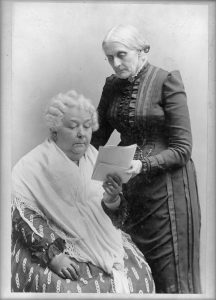
Susan B. Anthony and Elizabeth Cady Stanton met in 1851 and quickly became a powerful team that took part in several movements leading the women’s suffrage movement of the 19th century. They established Woman’s State Temperance Society in 1853, participated in the Underground Railroad, and spoke at several engagements supporting the women’s suffrage movement. However, during the course of the Civil War, their focus on women’s right was put on hold to focus more on abolitionism. In 1863, they created the Women’s Loyal National League (WLNL) to support emancipation in which they collected thousands of petitions to outlaw slavery from men and women. Yet, at the WLNL’s initial event, Susan B. Anthony called on women to strive for equality in speaking out against slavery in her opening speech:
Woman must now assume her God-given responsibilities and make herself what she is clearly designed to be, the educator of the race. Let her no longer be the mere reflector, the echo of the worldly pride and ambition of man. Had the women of the North studied to know and to teach their sons the law of justice to the black man, regardless of the frown or the smile of pro-slavery priest and politician, they would not now be called upon to offer the loved of their households to the bloody Moloch of war. And now, women of the North, I ask you to rise up with earnest, honest purpose, and go forward in the way of right, fearlessly, as independent human beings, responsible to God alone for the discharge of every duty, for the faithful use of every gift, the good Father has given you. Forget conventionalisms; forget what the world will say, whether you are in your place or out of your place; think your best thoughts, speak your best words, do your best works, looking to your own conscience for approval.[iv]
But shortly after the war ended, they turned their attention back to women’s suffrage. At the 1868 Women’s Suffrage Convention in Washington D.C., Stanton spoke in front of the crowd arguing for a 16th amendment for:
…’Manhood suffrage,’ or a man’s government, is civil, religious, and social disorganization. The male element is a destructive force, stern, selfish, aggrandizing, loving war, violence, conquest, acquisition, breeding in the material and moral world alike discord, disorder, disease, and death. See what a record of blood and cruelty the pages of history reveal! Through what slavery, slaughter, and sacrifice, through what inquisitions and imprisonments, pains and persecutions, black codes and gloomy creeds, the soul of humanity has struggled for the centuries, while mercy has veiled her face and all hearts have been dead alike to love and hope!
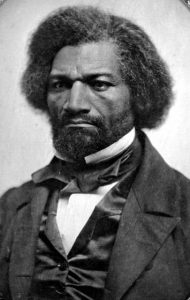
Frederick Douglass even spoke frequently on the women’s suffrage movement before and after the Civil War. In one speech presented to the International Council of Women in Washington D.C, he said:
Man has been so long the king and woman the subject—man has been so long accustomed to command and woman to obey—that both parties to the relation have been hardened into their respective places, and thus has been piled up a mountain of iron against woman’s enfranchisement. The same thing confronted us in our conflicts with slavery. Long years ago Henry Clay said, on the floor of the American Senate, “I know there is a visionary dogma that man cannot hold property in man,” and, with a brow of defiance, he said, “That is property which the law makes property. Two hundred years of legislation has sanctioned and sanctified Negro slaves as property.” But neither the power of time nor the might of legislation has been able to keep life in that stupendous barbarism.[v]
Despite all of their work in the women’s suffrage as well as the abolitionist movement, both women became bitter with the ratification of the 14th and 15th Amendments since women were left out of the debate. Stanton for one believed that “women voters of “wealth, education, and refinement” were needed to offset the effect of former slaves and immigrants whose “pauperism, ignorance, and degradation” might negatively affect the American political system.”[vi]
Additionally, Susan B. Anthony was actually arrested for voting in the Presidential Election of 1872 in her hometown of Rochester, New York. She was arrested, and tried in a public trial in which she argued:
“Mr. President, I say here on the floor of the American Senate, I stand for universal suffrage; and as a matter of fundamental principle, do not recognize the right of society to limit on any ground of race or sex. I will go farther and say, that I recognize the right of franchise as being intrinsically a natural right. I do not believe that society is authorized to impose any limitation upon it that do not spring out of the necessities of the social state itself…. Charles Summer, in his brave protests against the fourteenth and fifteenth amendments, insisted that, so soon as by the thirteenth amendment the slaves became free men, the original powers of the United States Constitution guaranteed to them equal rights-the right to vote and to be voted for. In closing one of his great speeches he said; “I do not hesitate to say that when the slaves of our country became citizens they took their place in the body politic as a component part of the people, entitled to equal rights, and under the protection of these two guardian principles: First-That all just government stand on the consent of the governed; and second, that taxation without representation is tyranny; and these rights it is the duty of Congress to guarantee as essential to the ideal of a Republic.”[vii]
She was fined $100 but she refused to pay. The court declined to take further action.

Stanton’s and Anthony’s views about the passage of the 14th and 15th Amendments caused them to split with other leading figures of the movement including Frederick Douglass, Lucy Stone, and Elizabeth Blackwell. They formed the National Women Suffrage Association in 1869–which was a more radical organization than the larger, well-known American Women Suffrage Association formed by Stone and Blackwell that same year– which not only argued that women were denied suffrage, but they were “were taxed without representation, governed without their consent, and tried and punished without a jury of their peers”.[viii]
The two organizations worked independently of one another until 1890 when they combined to form the National American Woman Suffrage Association (NAWASA), which would be active in fundraising and advocating until the passage of the 19th Amendment in 1920.
Endnotes:
[i] Jean H Baker, Sisters: The Lives of America’s Suffragists, (Hill and Wang, New York, 2005), 72.
[ii] Susan B. Anthony, “Speech, 1856”. https://susanb.org/educational-reformer/, (accessed August 23, 2020).
[iii] Ellen Carol DuBois, Feminism and Suffrage: The Emergence of an Independent Women’s Movement in America, 1848-1869, (Ithica, NY: Cornell University Press, 1978), 15.
[iv] Susan B. Anthony, “Return to the ‘Old Union’ Speech, 1863”, https://susanb.org/wpcontent/uploads/2018/12/Susan-B-Anthony-1863.pdf (accessed August 23, 2020).
[v] Frederick Douglass, “Frederick Douglass on Women’s Suffrage”, Seneca Falls, New York, 1888.
[vi] Elisabeth Griffith, In Her Own Right: The Life of Elizabeth Cady Stanton, (Oxford University Press; New York, NY, 1985), 124.
[vii] Susan B. Anthony, “Susan B. Anthony – On Women’s Right to Vote, 1872”, http://www.historyplace.com/speeches/anthony.htm, (accessed August 23, 2020).
[viii] Karlyn Kohrs Campbell, “Man Cannot Speak For Her: A Critical Study of Early Feminist Rhetoric”, (Westport: Praeger, 1989), 84.
Excellent post! Thank you! 🙂
Very nice article Paige. While I couldn’t get behind pardoning a John Brown or a Billy the Kid (both murderers), I can support pardoning Susan B. Anthony for peaceably breaking the law to stand up for what she believed in. Good for her.
Interestingly Mary B. Chestnut, like Frederick Douglass, also compared a woman’s station in the world to like that of being a slave.